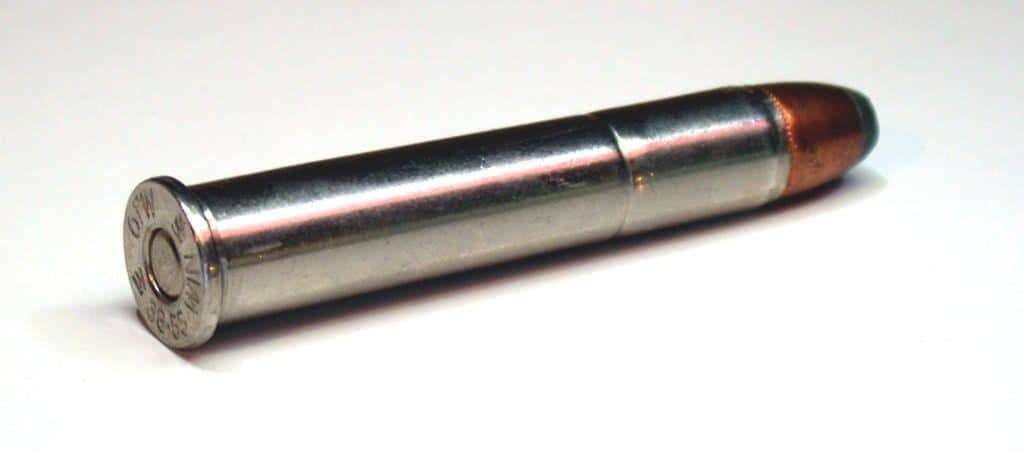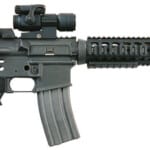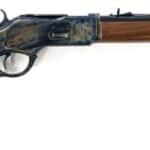
Introduction
The .38-55 Winchester remains one of the most enduring and respected cartridges in American firearms history. Known for its balanced power, mild recoil, and exceptional accuracy, the .38-55 has stood the test of time. Though introduced in the 19th century, its influence persists well into the modern era, with shooters, hunters, and historical firearms enthusiasts continuing to appreciate its utility. This article explores the cartridge’s origins, development, performance, and ongoing resurgence, providing a comprehensive analysis of why the .38-55 remains relevant today.
Origins and Development
Contrary to common belief, the .38-55 was not originally developed by Winchester but rather by the Ballard Rifle & Cartridge Company in 1876 for use in their Ballard No. 5 Pacific rifle, a single-shot rifle favored by hunters and target shooters alike. The cartridge quickly gained recognition due to its impressive accuracy and knockdown power, particularly for mid-range shooting.
Winchester later adopted the cartridge and chambered it in their iconic Model 1894 lever-action rifle, bringing it to a much broader market. The naming convention—.38-caliber bullet, 55 grains of black powder—was standard for cartridges of the era, though the actual bullet diameter typically ranged between .377 and .379 inches.
Ballistics and Performance
The original black powder load for the .38-55 fired a 255-grain lead bullet at approximately 1,250 to 1,350 feet per second (fps), generating around 1,000 to 1,200 foot-pounds of energy (ft-lbs). This made it an ideal choice for hunting medium-sized game such as deer and black bear. The relatively low velocity allowed for excellent penetration without excessive meat damage.
With the advent of smokeless powder in the late 19th century, updated loads for the .38-55 were introduced. Modern factory ammunition, depending on manufacturer and firearm strength, can propel a 255-260 grain bullet at 1,500-1,700 fps, significantly improving downrange energy and extending its effective hunting range to over 200 yards.
For handloaders, the .38-55 is particularly versatile. Using strong modern rifles such as the Winchester 94 and Marlin 336, handloaders can safely push 250-275 grain bullets to velocities exceeding 1,800 fps, making it a formidable round for even larger game like elk or moose at moderate distances.
Firearms Chambered in .38-55
Though widely associated with the Winchester Model 1894, the .38-55 was chambered in several notable rifles:
- Ballard No. 5 Pacific (1876) – The first rifle designed for the .38-55, known for its single-shot accuracy.
- Marlin Model 1881 – One of the earliest lever-action rifles to feature the cartridge.
- Marlin Model 1893 – A high-quality lever-action rifle that helped popularize the .38-55.
- Winchester 1885 High Wall & Low Wall – Single-shot rifles that were highly regarded for their precision.
- Stevens Model 44½ – A favorite among Schuetzen shooters for its unparalleled accuracy in competition.
- Modern reproductions – Companies like Henry Repeating Arms and Winchester have reintroduced rifles chambered in .38-55 to cater to contemporary demand.
Comparison to the .45-70 Government
While both the .38-55 Winchester and .45-70 Government originated in the black powder era and remain popular today, they serve slightly different purposes:
- Recoil: The .38-55 has noticeably less recoil than the .45-70, making it a more comfortable choice for extended shooting sessions.
- Trajectory: The .38-55 has a flatter trajectory out to 200 yards, whereas the .45-70, particularly with heavier bullets (400-500 grains), is better suited for large game at longer distances.
- Hunting Suitability: The .38-55 is ideal for deer, hogs, and black bear, while the .45-70 is often preferred for larger game like bison, moose, and grizzly bear.
For hunters seeking an effective mid-range cartridge with ample stopping power but reduced recoil compared to the .45-70, the .38-55 is an excellent option.
Legacy in Target Shooting
One of the often-overlooked strengths of the .38-55 is its superb accuracy. During the late 19th and early 20th centuries, it was a favored cartridge among Schuetzen rifle shooters—competitive marksmen who shot offhand at long-range targets. The .cartridge’s moderate velocity and heavy-for-caliber bullet provided excellent stability and resistance to wind drift.
Even today, the .38-55 remains a favorite among cast bullet shooters. Reloaders appreciate its ability to deliver excellent groups with heavy lead bullets, often sub-MOA accuracy at 100 yards, when properly tuned.
Modern Revival and Continued Popularity
In recent years, the .38-55 has experienced a strong resurgence, thanks to:
- Cowboy Action Shooting & Historical Firearm Competitions – Many enthusiasts favor authentic cartridges that were used in the late 19th century.
- Modern Rifles & Ammunition – Companies such as Starline Brass, Buffalo Bore, and Winchester have reintroduced high-quality .38-55 ammunition and components, making it easier than ever to obtain factory loads or reload for the caliber.
- Handloading Versatility – With modern smokeless powders, reloaders can tailor the cartridge to various applications, from mild target loads to high-performance hunting rounds.
- Classic Aesthetics & Performance – Many shooters appreciate the blend of old-world craftsmanship, ballistic effectiveness, and mild recoil that the .38-55 provides.
Technical Specifications
| Specification | Value |
|---|---|
| Bullet Diameter | .377 - .379 in |
| Case Length | 2.125 in |
| Overall Length | 2.51 in |
| Typical Bullet Weights | 220 - 300 gr |
| Factory Load Velocity | 1,250 - 1,700 fps |
| Energy Range | 1,000 - 1,500 ft-lbs |
| Max Pressure (SAAMI) | ~30,000 CUP (modern) |
Conclusion: A Testament to Timeless Design
The .38-55 Winchester is a historically significant and ballistically effective cartridge that has earned its place among America’s most beloved rounds. From frontier hunters to modern target shooters, its reputation for accuracy, versatility, and manageable recoil continues to attract a loyal following. Whether for hunting, competition, or historical appreciation, the .38-55 remains a proven and reliable choice that bridges the gap between the past and present of firearm ballistics.
For those who appreciate classic cartridges that stand the test of time, the .38-55 Winchester is a prime example of a round that refuses to fade into obscurity. With modern advancements and a growing appreciation for traditional firearms, its future appears brighter than ever.
References
Starline Brass & Buffalo Bore Ammunition product specifications.
Barnes, Frank C. Cartridges of the World, 16th Edition. Gun Digest Media, 2019.
Madis, George. The Winchester Book. Art and Reference House, 1985.
Nonte, George C. Modern Handloading. Winchester Press, 1978.
SAAMI (Sporting Arms and Ammunition Manufacturers’ Institute) Pressure Standards.
If you need some, Midway USA often has it in stock here.
If you know of any forums or sites that should be referenced on this listing, please let us know here.



